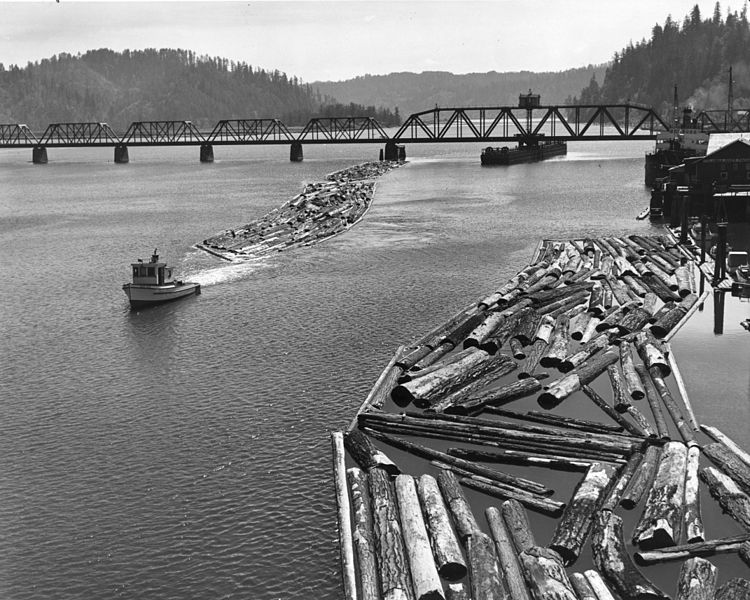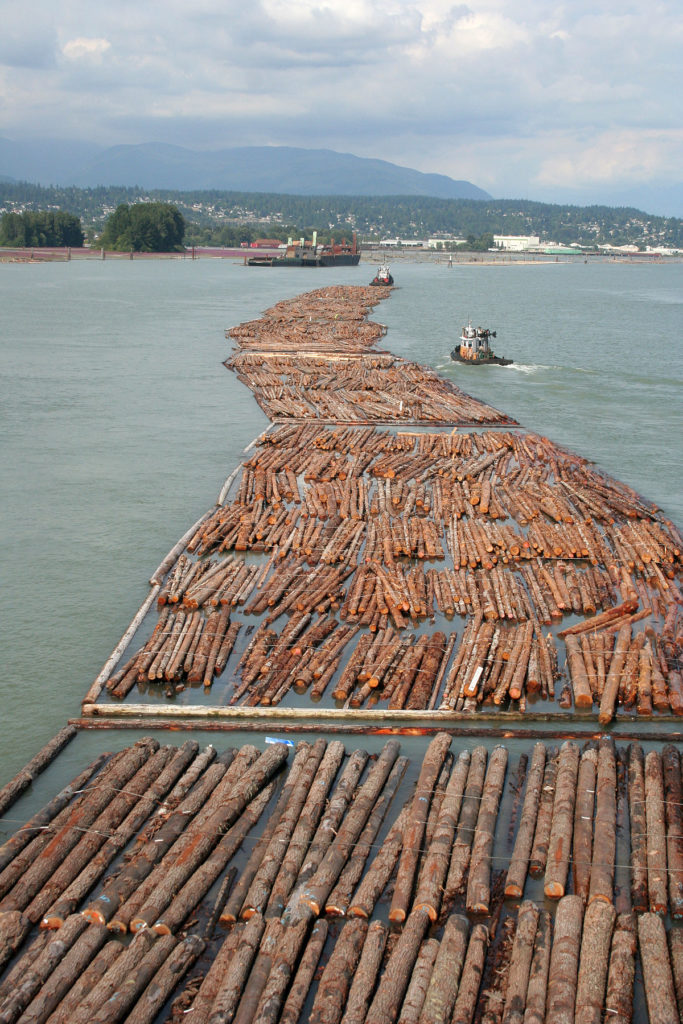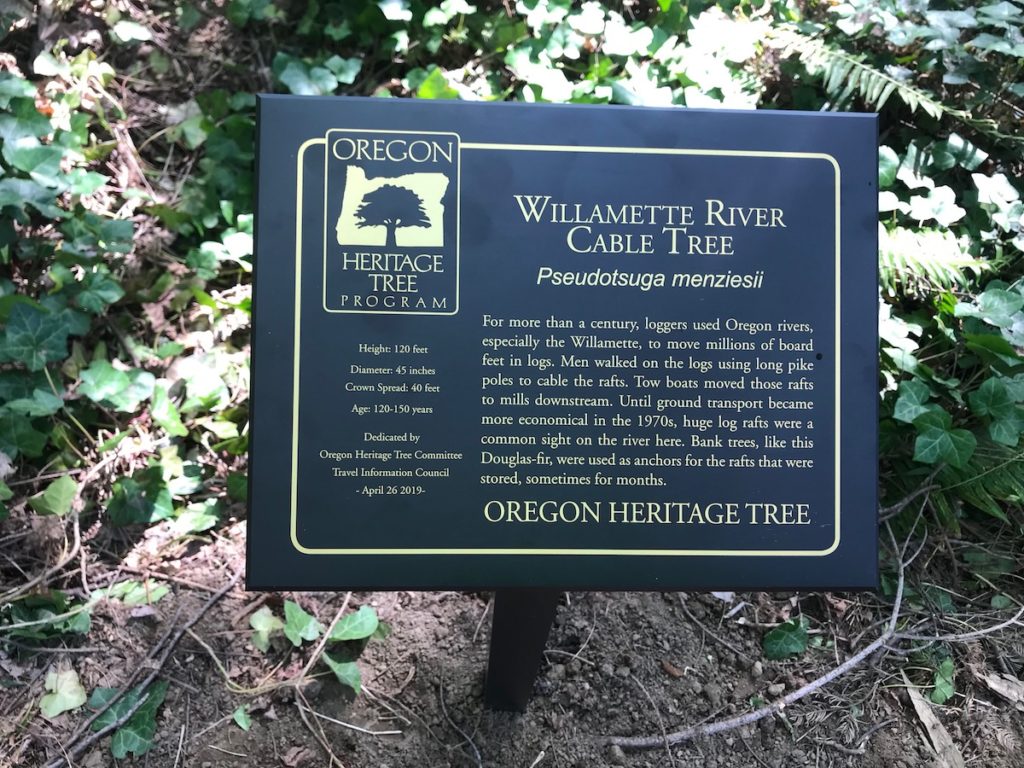Recently, the City of Wilsonville, as spearheaded by Wilsonville City Councilor and former Wilsonville mayor Charlotte Lehan, placed a Oregon historical marker in Wilsonville’s Memorial Park honoring several cable trees on the banks of the Willamette River as State of Oregon Heritage Trees.
So what is a cable tree?
Years ago when logging was the main driver in Oregon’s economy making this state the number one timber producer in the U.S., huge numbers of trees (billions of board feet per year) were being logged out of local forests each year. In many cases, the most economical way to get logs from the forest to the sawmill was to floats them down rivers like the Willamette. Huge log rafts would be created and then cabled and chained together and pulled downriver by tugboats where they would be tied up to trees (and sometimes pilings) along the riverbank waiting their turn to be hauled to the sawmill.

I still remember in the 1960s and 1970s seeing tugboats pulling enormous log rafts through downtown Portland’s Willamette River. It was a common sight that we took for granted. It wasn’t unusual to see multiple log rafts tied up near Ross Island along the river bank. Today when you travel up the Columbia River, or along some of Oregon’s coastal rivers, you can still see many old, rotting pilings that were used for that purpose decades ago. Such practices were part of Oregon’s illustrious logging history.

Today, many of these old anchor trees are still visible, including several along the Willamette River in Wilsonville. The scars from the cables can still be clearly seen in some trees, and other trees even have remnants of old cables and other hardware imbedded in them that the trees have often grown around.
Please enjoy the photos of some of these historical Wilsonville trees.






I just randomly found this site but my dad bill bernert and my grandpa albert were the ones who put out those cables for the log rafts they towed for several decades from eugene to portland. I still remember towing the last log rafts with my dad before it all ended and even putting out a couple chokers around trees to anchor rafts. I have all my dads logging stuff after he passed away 3 yeats ago
Cool! Thanks for chiming in. The Bernert family has made a giant historical footprint in Wilsonville as those of us who’ve lived here for decades know. Is there some logging museum in the area to which you can donate your dad’s logging stuff to in honor of your family?
My Dad and uncles worked for Bernert.
Question: I was kayaking across Hebb Park and saw a bunch of old wood poles wrapped in cable along other standing wooden poles and one big cement column. Do you have any information on these structures? I guessing they were part of the logging transportation down the Willamette River, however I can’t find information regarding the structure(s). Here are the coordinates of the structures. Any information would be cool to share with our kayaking group. Thank you.
I don’t have any specific information about these structures at Hebb Park. As you know, in the past, a lot of commercial activities occurred along the Willamette River from the early to mid-1800s up until just a few decades ago. Now the river is mainly used for recreation. Previously, the Willamette had dozens of ferries that carried traffic across it and much steam boat traffic. Plus it was a major thoroughfare for log transporting to the Oregon City mills and elsewhere as well as tug boat and dredging activities. So the pilings and cement columns you’re talking about could have been used for any one of a number of commercial operations.